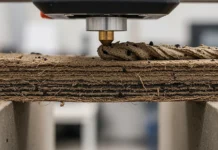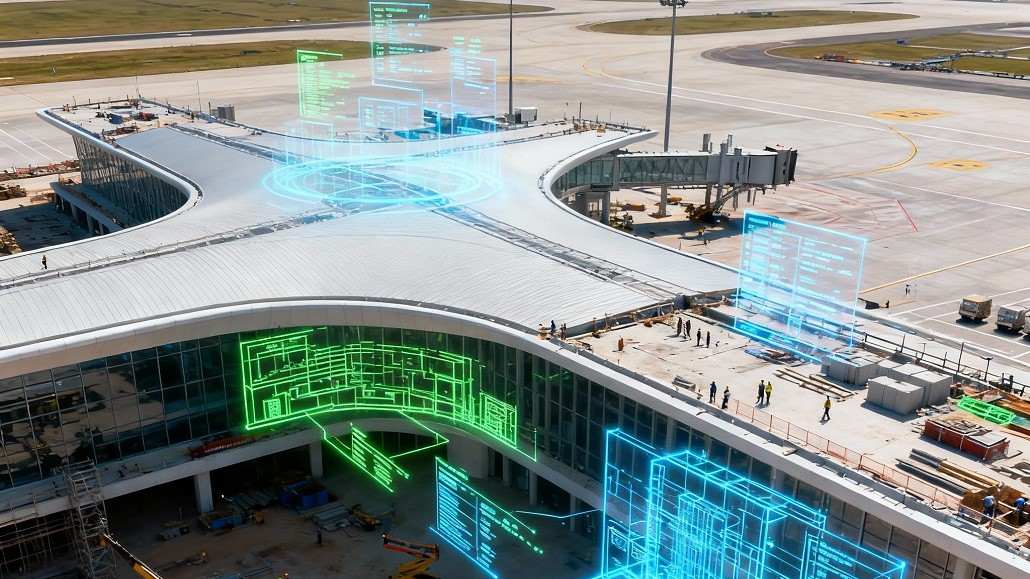Digital Twins Transforming the Future of Terminal Infrastructure
The construction industry stands at the precipice of a technological revolution, where digital twin technology in terminal infrastructure is reshaping how we design, build, and manage complex transportation hubs. As global trade volumes continue to surge and passenger expectations rise, terminal operators and construction professionals are increasingly turning to digital twin solutions to address the multifaceted challenges of modern infrastructure development.
Digital twins represent far more than sophisticated 3D models or advanced visualization tools. They constitute comprehensive virtual replicas of physical terminal assets that continuously synchronize with real-world operations through sensor networks, IoT devices, and data analytics platforms. This integration creates dynamic, living representations that evolve alongside their physical counterparts, providing unprecedented visibility into terminal performance, construction progress, and operational efficiency.
Revolutionizing Design Accuracy Through Virtual Modeling
The implementation of digital twin technology in terminal infrastructure begins during the earliest design phases, where architects and engineers can create detailed virtual environments that account for complex operational requirements. Unlike traditional design methodologies that rely on static blueprints and assumptions, digital twins enable design teams to simulate passenger flows, cargo movements, and equipment operations within virtual terminal environments before construction commences.
Modern terminal projects benefit significantly from this approach, particularly when addressing the intricate interplay between different systems. Digital twins allow designers to test various scenarios, from peak-hour passenger congestion to emergency evacuation procedures, ensuring that terminal layouts optimize both operational efficiency and user experience. The technology enables real-time collaboration between multidisciplinary teams, reducing design conflicts and eliminating costly revisions during construction phases.
Contemporary digital twin implementations in terminal infrastructure incorporate advanced simulation capabilities that model everything from air quality and lighting conditions to structural stress patterns under various load scenarios. This comprehensive approach ensures that design decisions are based on empirical data rather than theoretical projections, significantly reducing the risk of performance issues once terminals become operational.
Enhanced Collaboration and Decision-Making
Digital twin platforms facilitate seamless collaboration between stakeholders throughout the design process. Construction teams, terminal operators, regulatory authorities, and end-users can interact with the same virtual model, providing feedback and identifying potential issues before they manifest in physical construction. This collaborative approach reduces miscommunication and ensures that all parties maintain aligned expectations regarding project outcomes.
The technology also enables design teams to conduct comprehensive impact assessments, evaluating how proposed changes affect terminal operations, construction schedules, and long-term maintenance requirements. By visualizing these relationships within the digital twin environment, project leaders can make informed decisions that balance immediate construction needs with long-term operational objectives.
Optimizing Construction Efficiency and Project Management
Digital twin technology in terminal infrastructure extends its transformative impact throughout the construction phase, where it serves as a central coordination platform for complex projects involving multiple contractors, trades, and logistics chains. The technology enables real-time progress monitoring, allowing project managers to compare actual construction activities against planned schedules and identify potential delays before they impact critical path activities.
Construction teams utilize digital twins to optimize resource allocation, equipment deployment, and workforce scheduling. By modeling construction sequences within the virtual environment, project managers can identify bottlenecks, test alternative approaches, and develop contingency plans that minimize disruptions to ongoing operations. This proactive approach proves particularly valuable in terminal construction projects, where maintaining operational continuity often requires phased construction approaches.
The integration of digital twins with Building Information Modeling systems creates powerful synergies that enhance construction accuracy and quality control. Workers can access detailed installation instructions, material specifications, and quality requirements directly from mobile devices, reducing errors and ensuring compliance with design specifications. Real-time updates to the digital twin reflect construction progress, enabling immediate identification of deviations from planned activities.
Real-Time Progress Monitoring and Quality Assurance
Modern digital twin implementations incorporate advanced monitoring systems that track construction progress through computer vision, sensor networks, and automated data collection. These systems continuously update the virtual model with actual construction conditions, enabling project managers to maintain accurate records of completed work and identify areas requiring attention.
Quality assurance processes benefit significantly from digital twin integration, as the technology enables automated comparison between planned specifications and actual construction conditions. Deviations from design intent are immediately flagged, allowing construction teams to address issues before they compound into larger problems requiring extensive rework.
Transforming Lifecycle Management and Maintenance Operations
The true value of digital twin technology in terminal infrastructure emerges during the operational phase, where the virtual model becomes a comprehensive asset management platform. Terminal operators can monitor facility performance, track maintenance requirements, and optimize operational procedures based on real-time data from sensors, equipment systems, and user feedback.
Predictive maintenance capabilities represent one of the most significant advantages of digital twin implementation in terminal operations. By continuously monitoring equipment performance, environmental conditions, and usage patterns, the system can predict maintenance needs before failures occur, reducing downtime and extending asset lifecycles. This proactive approach proves particularly valuable in terminal environments, where equipment failures can disrupt operations and impact thousands of travelers or cargo shipments.
Digital twins also enable terminal operators to optimize energy consumption, space utilization, and resource allocation based on actual usage patterns rather than theoretical projections. The system can identify underutilized areas, optimize HVAC operations, and recommend configuration changes that improve both efficiency and user experience.
Data-Driven Operational Optimization
The continuous data collection enabled by digital twin technology provides terminal operators with unprecedented insights into facility performance and user behavior. Passenger flow patterns, equipment utilization rates, and environmental conditions are continuously monitored and analyzed, enabling data-driven decisions that enhance operational efficiency.
Terminal operators can use digital twin insights to optimize staffing levels, adjust service offerings, and implement improvements that directly impact user satisfaction. The technology also supports capacity planning initiatives, helping operators understand how proposed expansions or modifications will affect overall terminal performance.
Integration with Smart Terminal Technologies
Digital twin technology in terminal infrastructure serves as the foundation for broader smart terminal initiatives, where interconnected systems work collaboratively to optimize operations and enhance user experiences. The virtual model provides a centralized platform for integrating various smart technologies, from automated baggage handling systems to biometric passenger processing platforms.
The integration of artificial intelligence and machine learning capabilities within digital twin platforms enables predictive analytics that anticipate operational challenges and recommend proactive solutions. These systems can predict passenger volumes, optimize resource deployment, and identify potential security concerns before they impact terminal operations.
Smart terminals benefit from digital twin technology through enhanced situational awareness, where operators can monitor multiple facility systems simultaneously and respond quickly to changing conditions. This comprehensive visibility enables more effective emergency response, improved security management, and enhanced overall operational resilience.
Future-Proofing Terminal Infrastructure
Digital twin implementations provide terminal operators with flexible platforms that can adapt to evolving operational requirements and technological advancements. The virtual model can accommodate new systems, processes, and technologies without requiring extensive physical modifications, enabling terminals to remain competitive and responsive to changing market conditions.
The technology also supports sustainability initiatives by enabling operators to model and optimize energy consumption, waste management, and environmental impact. Digital twins can simulate the effects of proposed sustainability measures, helping operators make informed decisions about investments in renewable energy, efficiency improvements, and environmental management systems.
Implementation Strategies and Best Practices
Successful implementation of digital twin technology in terminal infrastructure requires careful planning, stakeholder engagement, and phased deployment approaches. Organizations must establish clear objectives, identify key performance indicators, and develop comprehensive change management strategies that address both technical and cultural aspects of digital transformation.
The most effective digital twin implementations begin with pilot projects that demonstrate value and build organizational confidence before expanding to comprehensive facility-wide deployments. This approach enables teams to develop expertise, refine processes, and address technical challenges in controlled environments before tackling complex, mission-critical applications.
Data quality and integration represent critical success factors for digital twin implementations. Organizations must establish robust data governance practices, ensure system interoperability, and maintain data accuracy throughout the facility lifecycle. Regular validation and calibration of digital twin models ensure that virtual representations accurately reflect physical conditions.
Building Organizational Capabilities
Digital twin technology in terminal infrastructure requires new skills and capabilities that may not exist within traditional construction and facility management teams. Organizations must invest in training programs, hire specialized talent, and develop partnerships with technology providers to build the expertise necessary for successful implementation.
Change management initiatives should address both technical aspects of digital twin adoption and cultural changes required to leverage data-driven decision-making effectively. Organizations must foster collaborative environments where stakeholders can contribute to and benefit from digital twin insights.
The transformation of terminal infrastructure through digital twin technology represents a fundamental shift toward more intelligent, efficient, and responsive facility management. As the technology continues to mature and integration capabilities expand, digital twins will become essential tools for terminal operators seeking to optimize performance, reduce costs, and enhance user experiences in increasingly complex operational environments. The organizations that embrace this technology today position themselves at the forefront of terminal infrastructure innovation, ready to capitalize on emerging opportunities and address evolving challenges in the global transportation sector.































